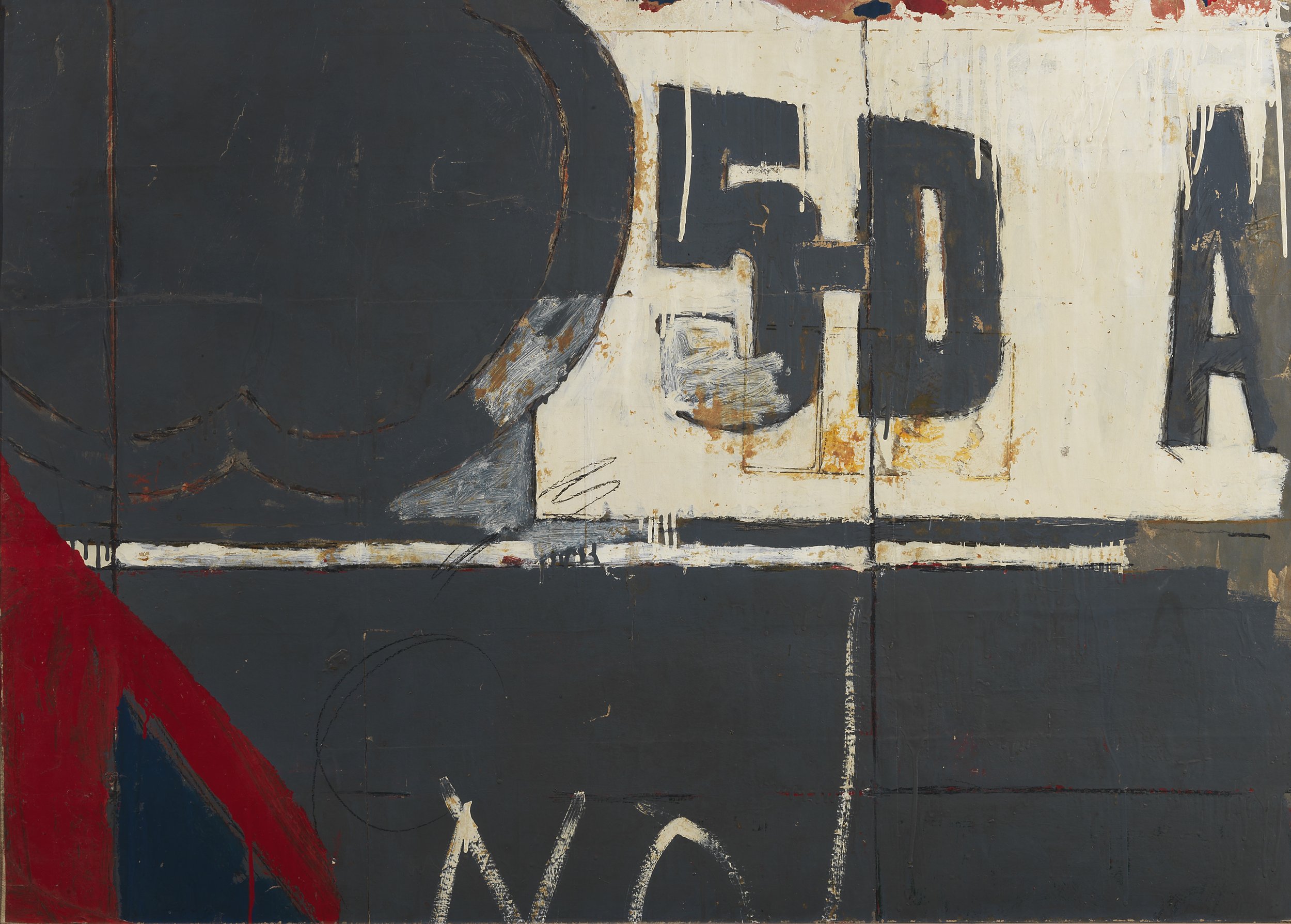Olalekan Jeyifous at Art Omi / Mario Schifano at Magazzino
Olalekan Jeyifous: Even in Arcadia… at Art Omi, Ghent, NY, through June 2, ‘24.
Olalekan Jeyifous: Even in Arcadia...,2024. Installation view: Ph: Bryan Zimmerman. Courtesy of Art Omi.
The glossy handout for Olalekan Jeyifous’s current exhibition at Art Omi, Even in Arcadia..., clues visitors in to the trippy, visionary installation they are about to witness in the main gallery. The flyer appears as a promotional brochure for proposed enterprises for the mid-Hudson Valley, like magic mushroom farming, oyster harvesting in Ulster Country lagoons, and “blessed beekeeping” throughout the region, ostensibly geared mainly toward Black entrepreneurs. On view are a dozen large-scale digitally composed photo works—including several cut-out pieces—and three small black resin sculptures made with a 3-D printer, plus a colorful animated video.
All of the works contain imaginative renderings of what these enterprises might look like, and how they might be realized. Some images show old, rickety machinery adapted to perform tasks like mushroom gathering (Mutha Mushroom), oyster harvesting using drones (Oyster Drone), and new means of transportation, as in the image of a young girl riding a mechanical fox (Fox Trot). Several photos hang on sections of wall painted bright yellow, and others are set against eye-popping wallpaper with yellow-and-black super-graphic designs.
Olalekan Jeyifous, Mutha Mushroom, 2024. Olalekan Jeyifous, Fox Trot, 2024. . Installation View : Olalekan Jeyifous: Even in Arcadia... Ph: Bryan Zimmerman. Courtesy of Art Omi
Jeyifous refers to the project as an exploration of an “urban protopia” set within the Hudson Valley, and “retrofuturism,” with a nod to Afrofuturism in its unique cultural, ethnic, and technological blend. The Brooklyn-based artist and designer, who won the Silver Lion at last year’s Venice Architectural Biennale, pulls off in this exhibition an engaging and unusually successful merger of art and design. His vision is certainly humor-inflected, but it also harbors an underlying environmental theme about how best to develop yet preserve this area that was once a pristine Arcadia. —David Ebony
Mario Schifano: Germinal at Magazzino, Cold Spring, NY, through August 9, ‘24.
Mario Schifano Segnaletica (Signage) , 1961. Enamel and graphite on paper mounted on canvas. Private Collection Ph: Arte Fotografica – Roma. ©Fondazione Maurizio Calvesi by SIAE 2024. Courtesy Magazzino Italian Art.
One of Italy’s major art stars of the 1960s and ’70s, Mario Schifano (1934-1998) was also a filmmaker, a rock-n-roll performer, and something of an international celebrity, who dated Mick Jagger’s exes, Anita Pallenberg and Marianne Faithful. In recent years, his art is rarely shown in the U.S., so Mario Schifano: Germinal, a survey of early works that made him famous, is something of a revelation. Organized by Magazzino director Filippo Fossati, in collaboration with the Archivio Mario Schifano and Fondazione Maurizio Calvesi in Rome, the exhibition inaugurates Magazzino’s new Robert Olnick Pavilion.
Featured here are 52 works from 1960-1970, including major paintings and photo pieces, videos, and vitrines filled with archival materials. The earliest works, on view in an upper-level gallery, demonstrate the young Schifano’s restless, creative energy. He was a multifaceted, multitalented painter with an exhilarating range of interests. He produced proto-Pop-art works, such as Propaganda Detail (1962), using fragments of the Coca-Cola logo as part of his acerbic critique of the encroachment of American consumerism in Postwar Italy. He used the Coca-Cola theme in a different way in Kokakola (1962). A large monochrome composition using the deep red of the Coca-Cola logo, it is among the show’s most striking works. Hardly a purist, Schifano’s approach to reductive art was rebellious and anarchic. With brazen panache, he allowed drips and splashes to disrupt the pristine surfaces of Kokakola, To de Chirico (1962), and other paintings of the period.
Installation View Mario Schifano: Germinal. Courtesy of Magazzino.
Schifano’s works were always political on some level, as in Abstract Painting for the Death of Corradino (1965). Showing hands silhouetted in blood red, and with the title frantically scrawled, graffiti-like, across the canvas surface, the work is a passionate homage to a young protestor who died in a demonstration against the Italian government’s conservative policies. Elsewhere, Schifano’s adventurous experiments with materials and imagery, sometimes recall Sigmar Polke’s, and can be breathtaking. Mario Schifano: Germinal is a potent tribute to the early work of an artist whose reputation and relevance continue to ascend. —David Ebony




